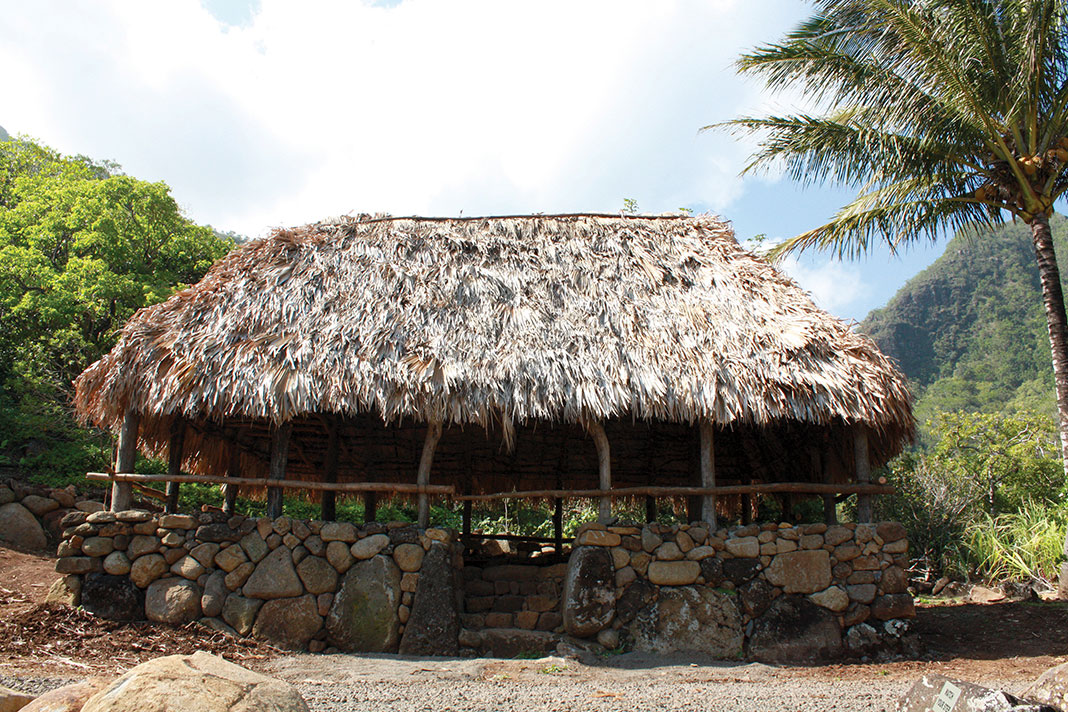
If the kauhale was part of a village, there might also be a terraced stone heiau (temple) dedicated to a powerful god, and near it, the hale of the ali‘i (the ruling chief, or chiefly class), on its imposing stone platform. Specially trained po‘e kuhikuhi pu‘uone (master builders and architects) created these formidable structures, working with, and designing in, wood and stone. Big projects—like the shared irrigation systems for kalo fields, and rock-walled fishponds encircling productive estuaries—involved the whole community.
The large hale wa‘a on or near the beach housed the priceless fishing canoes. Once the canoes were out on the ocean for the day, people could use the airy building for classes in hula or any other activity that called for a sizeable shady space. Fishermen also kept the hale lawai‘a, the fishing house, for crafting or repairing their fishing tools and nets. The Hawaiian Dictionary lists some thirty-two kinds or classes of houses prior to European contact.

“One of the least-known uses for hale was to hide from the ali‘i,” says renowned hale builder Francis “Palani” Sinenci. “For example, during the Makahiki [the winter festival time], when the ali‘i toured the island gathering taxes and tribute, no dogs, slaves, or other people could be seen or heard, so the hale was where you sheltered. And if special hale were built for the [essentially holy] ali‘i at that time, the kapu dictated that they be burned afterwards. Under some of the old kapu, you could be put to death for building an important hale wrong or badly.”
With Western contact in the seventeen- and eighteen-hundreds came Western ideas about building, as well as introduced plants, many of which overran or out-competed native species, with help from the nonstop grazing of introduced cattle and goats, and the voracious nibbling of European rats—all of which were happy to chew on hale, too. In the span of two hundred years, the knowledge of hale building faded along with the native trees and grasses.






Come Laulima with us bubba
I am an Artisan at Waimea Falls and am interested in hale building (certified). I currently work under the direction of Ka’ulamealani Papa Diamond. I would like to ask if there is any way A step by step guide on traditional thatching(knots) methods can be sent to either myself or Ka’ula at Waimea Falls. I am currently familiar with 3 tying methods as I have worked on the Hale O Lono project from start to finish. Mahalo nui for taking the time to read as well as consider my request.